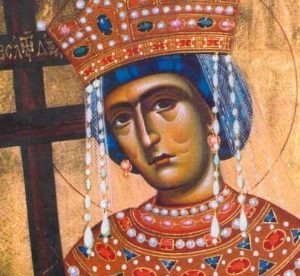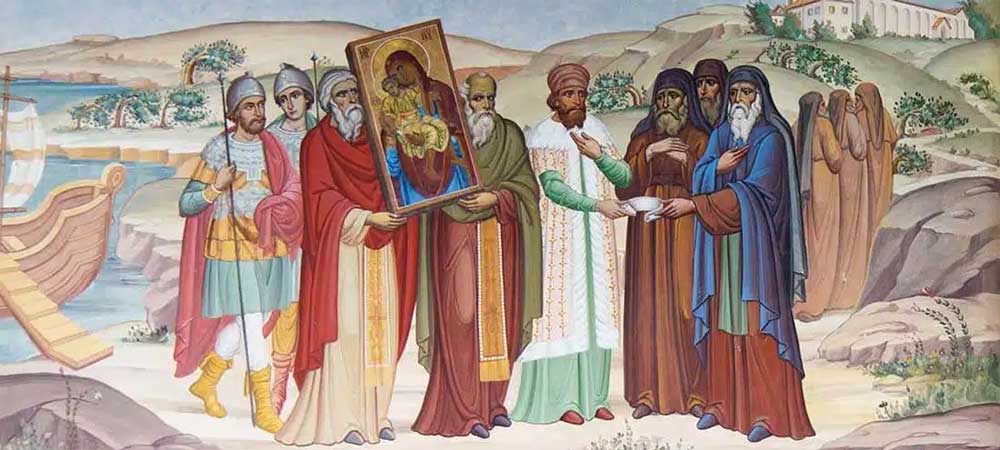Saint Helen the mother of Constantine the Great
 Saint Helen is the mother of Constantine the Great, whom the Christian Church declared co-apostle with her son. The memory of Constantine and Helen is commemorated on May 21 by the Orthodox Church, while the Roman Catholic Church celebrates the memory of Saint Helen on August 18.
Saint Helen is the mother of Constantine the Great, whom the Christian Church declared co-apostle with her son. The memory of Constantine and Helen is commemorated on May 21 by the Orthodox Church, while the Roman Catholic Church celebrates the memory of Saint Helen on August 18.
She was born in 247 to 250 in Drepano, Bithynia (now Hershek, Turkey) and was of humble origin. Ambrosios of Mediolanum calls her “Stabularia”, i.e. a girl who works in an inn. In 270 she married the Roman officer Constantius Chlorus (250-306) and two years later gave birth to Constantine. According to another version, Eleni was Constantius’ concubine, whom he never married.
When Constantius was about to become Caesar of Gaul, he was forced to divorce Helen because of her common descent, which Roman law considered incompatible with rising to high office in the empire. Constantius married Theodora, niece of Augustus of the West Maximianus, and Helen then left for the East, where she lived humbly, with the undivided support of her son. Constantine awarded her the title of Augusta, issued coins in her image and renamed her birthplace Helenopolis.
When Constantine became emperor, Helen decided to make inquiries to find the tomb and the cross of Christ. In 326 he arrived in Palestine and after many difficulties found the Holy Cross and then financed the construction of Christian churches in many parts of the empire.
Later, Saint Helen returned to Constantinople, where she died between 328 and 330, aged about 80.
Saint Helen was particularly generous and generous. To others he offered money, to others he supplied the necessary clothing, he cared for penniless, naked and unprotected people; he freed others from bonds or the evils of the mines, he freed others from oppression, and he recalled others from exile.
Saint Helen’s contribution to the construction and decoration of Christian churches in Jerusalem and Bethlehem was significant. According to the Synaxarist, Saint Helen searched and found the Cross of the Lord at the horrible Golgotha. This fact made her very happy. According to tradition, while sailing to Constantinople carrying most of the Holy Cross, he passed by the island of Cyprus, where he founded the Monastery of Stavrovouni. Saint Helen left a piece of the sacred wood in Jerusalem, another she took to Constantinople and others were distributed in many parts of the world, as Saint Cyril of Jerusalem testifies.
Saint Helen, with the assistance of M. Constantine, continued the apostolic tradition of caring for the needy and the needy until her old age, bequeathing this habit to posterity. Thus, women in every era together with holy men contributed to the practical application of the commandment of love. Something similar is happening nowadays, since thousands of volunteers are active in the social work of the Church. And the benefit is twofold. On the one hand, the weak members of society are helped, and on the other, women are given the opportunity to give meaning to their daily lives, to avoid isolation and to strengthen themselves psychologically and spiritually.
